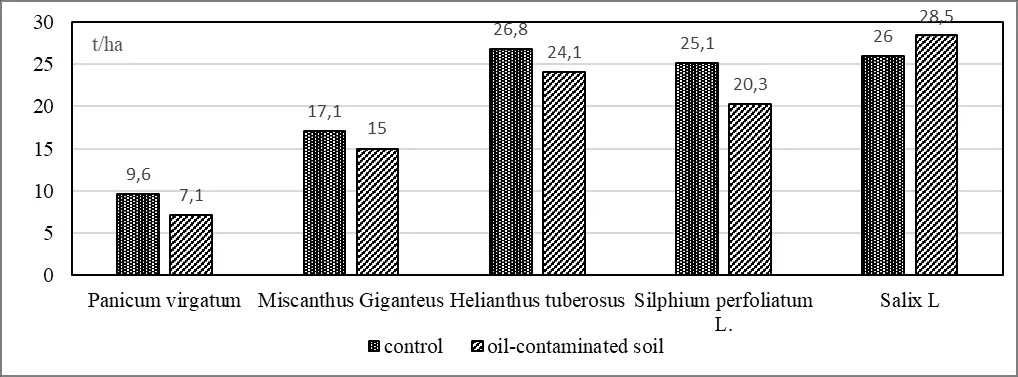Figure 2. The content of macronutrients in energy crops on oil-contaminated soil
The content of potassium and phosphorus in the sylph perforated and candlegrass varies for potassium from 0.82-1.23%, respectively, in the control and from 0.6 to 1.43%, respectively, in oil-contaminated soil. For phosphorus, the indicators are 0.22
- 0.34% on the control and 0.21 - 0.29% on the oil-contaminated soil, respectively. The total percentage of macronutrients is reduced by 10.5 - 20% in the green mass of energy crops grown on oil-contaminated soil.
However, the percentage of macronutrients in the vegetative mass of Jerusalem artichoke when grown under control is higher by 4% compared to oil-contaminated soil. Such trends in the change in the chemical composition of plants grown on oil-18

SCIENCE, TRENDS AND PERSPECTIVES OF DEVELOPMENT
contaminated soils indicate a decrease in the intensity of nutrient uptake during the growing season and a decrease in the overall bioproductivity of agrophytocenoses, which is observed in the yield of energy crops. yields of vegetative mass change (Fig.
3).
Figure 3. Yield of green mass of energy crops, t/ha The lowest productivity of green mass is in energy crops of candlegrass and miscanthus and is 19.7 and 26.9 t/ha, respectively, in the control and 15, 3 and 22.1
t/ha on oil-contaminated soil.
The yield of vegetative mass of energy willow, which was grown under control, was 42.9 t/ha, and on oil-contaminated soil, this figure increased by 1.2 t/ha. The yield of green mass of sylphia perforated was 52.1 t/ha in the control, which was 2.9% higher than in the area contaminated with petroleum products. The yield of green mass of Jerusalem artichoke was 50.1 t/ha under control and decreased on oil-contaminated soil to 45.4 t/ha.
According to the results of research, it can be argued that the cultivation of energy crops on oil-contaminated soils significantly reduces the intensity of assimilation of macro-and micronutrients by plants compared to cultivation in unpolluted areas. This affects the formation of the yield of vegetative mass, which decreases depending on the crop by 4.4 - 4.7 t/ha compared to growing on uncontaminated soil.
This trend is observed for all energy crops, except for energy willow, the cultivation of which on contaminated soil helps to increase the yield of green mass compared to the control version by 4.8 t / ha, or 8%. Some resilience to unfavorable growing conditions is also noted by the sylphia pronizanolista, the yield of which on oil-contaminated soil decreased by 1.5 t / ha, or 2.8% compared to the control variant, which was within the 5% statistical error. Also, the yield of vegetative mass of Jerusalem artichoke decreased by 9.3% compared to the control. The lowest resistance to growing conditions on oil-contaminated soil is grassy cereal energy crops, the yield of which in these areas is reduced by 18 - 22% compared to growing on unpolluted soil.
Thus, the cultivation of energy willow and sylphia perforated has significant prospects for the remediation of oil-contaminated areas. The cultivation of herbaceous 19
SCIENCE, TRENDS AND PERSPECTIVES OF DEVELOPMENT
cereals (miscanthus and switchgrass) for such purposes requires further study with repeated cycles of use.
Prospects for further research are to study the factors that slow down the assimilation of nutrients by energy crops grown on oil-contaminated soils.
Referens
1. Banks M. K. 2003. Degradation of crude oil in the rhizosphere of Sorghum bicolor [M. K. Banks, P. Kulakow, A. P. Schwab, Z. Chen, K. Rathbone]. Intern. J.
Phytoremediation. Vol. 5, № 3. P. 225-234. doi: 10.1080/713779222.
2. Bourgeois, E., Dequiedt, S., Lelièvre, M., van Oort, F., Lamy, I., Maron, P. A.
(2015). Miscanthus bioenergy crop stimulates nutrient-cycler bacteria and fungi in wastewater-contaminated agricultural soil. Environmental Chemistry Letters, 13(4), 503‒511. doi: 10.1007/s10311-015-0532-4
3. Dzhura N. M. 2011. Perspektyvy fitoremediatsii naftozabrudnenykh gruntiv roslynamy Faba bona Medic. (Vicia faba L.). Visnyk Lvivskoho universytetu. Ser. biol.
Vyp. 57. S.117-124.
4.. Gerhardt K. E. 2009. Phytoremediation and rhizoremediation of organic soil contaminants: Potential and challenges [K. E. Gerhardt, X.-D. Huang, B. R Glick, B.
M. Greenberg]. Plant Science. 176 (1). Р. 20-30. doi: 10.1016/j.plantsci.2008.09.014.
5. Kalenska S., Yeremenko O., Novictska N., Yunyk A., Honchar L., Cherniy V., Stolayrchuk T., Kalenskyi V., Scherbakova O., Rigenko A. ( 2019 ). Enrichment of field crops biodiversity in conditions of climate changing. Ukrainian Journal of Ecology . №
9 (1). 19-24
6. Lopushniak V. I., Hrytsuliak H. M., Kotsiubynsky A. O. 2021. Forecasting the productivity of the agrophytocenoses of the miscanthus giganteus for the fertilization based on the wastewater sedimentation using artificial neural networks. Ecological Engineering & Environmental Technology Volume 22, Issue 3. Р.11-19
7. Lopushniak V., Hrytsulyak H. 2021. The Models of the Heavy Metal Accumulation of the Multiple Grain Energy Cultures for Wastewater Deposition on Oil-Polluted Degraded Soils. Ecological Engineering & Environmental Technology, 22(4), Р. 1–13 https://doi.org/10.12912/27197050/137873 ISSN 2719-7050, License CC-BY 4.0
8. Merkl N. 2005. Assessment of tropical grasses and legumes for phytoremediation of petroleum-contaminated soils [N. Merkl, R. Schultze-Kroft, C.
Infant]. Water Air Soil Pollut. 165. Р. 195-209. doi: 10.1007/s11270-005-4979- y.
9. Mohammed YA, Raun W, Kakani G, et al. 2015. Nutrient sources and harvesting frequenting on quality biomass production of switchgrass ( Panicum virgatum L.)
for
biofuel.
Biomass
Bioenergy
2015;
81:
242.
http://dx.doi.org/10.1016/j.biombioe.2015.06.027
10. Pandey, V. C., Bajpai, O., & Singh, N. (2016). Energy crops in sustainable phytoremediation. Renewable and Sustainable Energy Reviews, 54, 58–73. doi: 10.1016/j.rser.2015.09.078
20
SCIENCE, TRENDS AND PERSPECTIVES OF DEVELOPMENT
11. Pidlisnyuk, V. V., Erickson, L. E., Trögl, J., Shapoval, P. Y., Popelka, J., Davis, L. C., Hettiarachchi, G. M. (2018). Metals uptake behaviour in Miscanthus x giganteus plant during growth at the contaminated soil from the military site in Sliač, Slovakia. Polish Journal of Chemical Technology, 20(2), 1‒7. doi: 10.2478/ pjct-2018-0016.
12. Pukish, A. (2017). Study of the restoration features of soils that were influenced by formation water. Scientific Bulletin Series D: Mining, Mineral Processing, Non-Ferrous Metallurgy, Geology and Environmental Engineering, 31(2), 71–76.
13. Pysarenko, P. V., & Bezsonova, V. O. (2020). Potential for the utilization of biofuel plant of the second generation of Miscanthus giganteus for phytoremediation of oil-contaminated lands. Agrology, 3(3), 127–132. https://doi.org/10.32819/020015
Shevchyk L. Z., Romaniuk O. I. 2016. Vykorystannia oblipykhy krushynovydnoi dlia fitoremediatsii naftozabrudnenykh gruntiv. Biolohichnyi visnyk MDPU imeni Bohdana Khmelnytskoho, Vyp. 6 (3), S. 472-480.
14. Velychko O. I. 2011. Vmist nitratnoho azotu v grunti ta orhanakh roslyn soi za umov zabrudnennia gruntu naftoiu. Naukovyi visnyk NLTU Ukrainy: zbirnyk naukovo-tekhnichnykh prats. Lviv: RVV NLTU Ukrainy. Vyp. 21.16. S. 351-354.
15. Walworth, J., Pond A., Snape, I., Rayner, J., Ferguson, S., & Harvey, P.
(2007). Nitrogen requirements for maximizing petroleum bioremediation in a sub-Antarctic soil. Cold Regions Science and Technology, 48(2), 84–91.
Читать дальше













